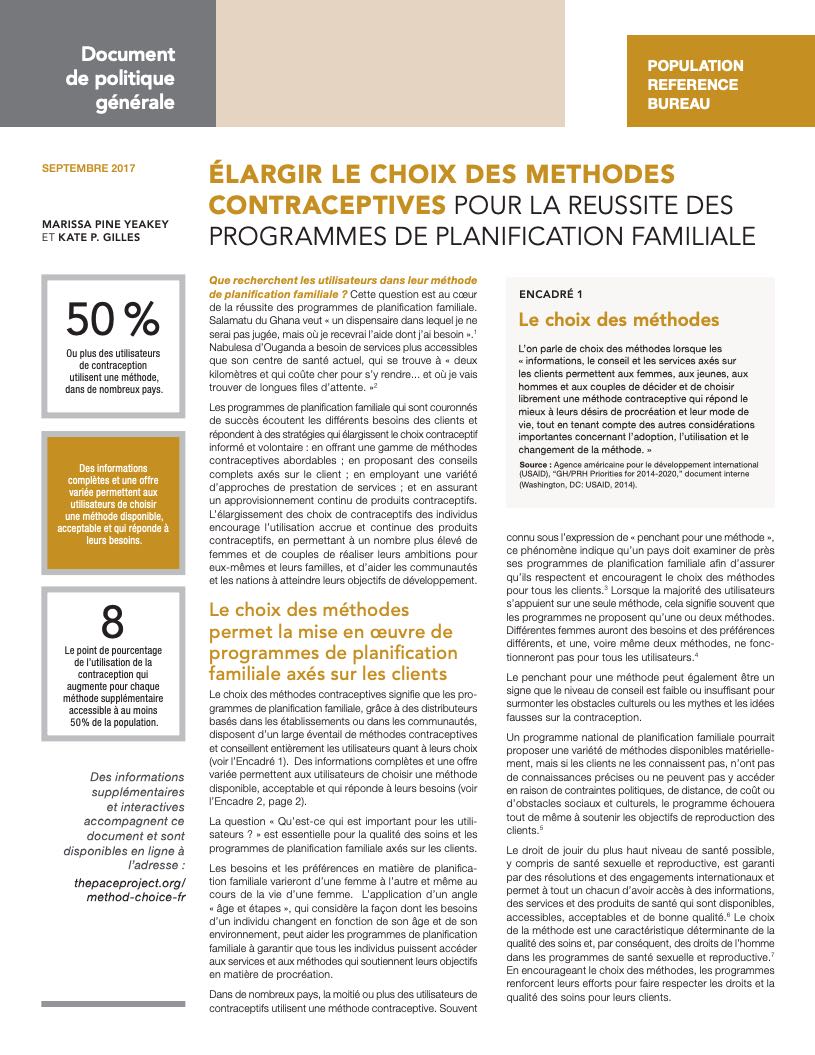Project: PACE: Policy, Advocacy, and Communication Enhanced for Population and Reproductive Health
488 Search Results Found For : ""

Project: PACE: Policy, Advocacy, and Communication Enhanced for Population and Reproductive Health
Building Resilience to Water Scarcity: The Role of Family Planning in Sub-Saharan Africa
This infographic shows how family planning can mitigate water scarcity by promoting fertility decline and reducing population pressures on water resources.

Project: PACE: Policy, Advocacy, and Communication Enhanced for Population and Reproductive Health
2017 World Population Data Sheet (PDF)
Data Sheet’s youth focus features nine special indicators and several analytical graphics exploring the state of the world’s youth, defined as people ages 15 to 24.

Progress in U.S. Women’s Well-Being Stalled in Recent Generations
(2017) The level of well-being of young American women (ages 16 to 34) rose significantly for members of the Baby Boom generation but hit a wall for women in subsequent generations, the Population Reference Bureau (PRB) concludes in a new report.

Project: PACE: Policy, Advocacy, and Communication Enhanced for Population and Reproductive Health
ÉLARGIR LE CHOIX DES METHODES CONTRACEPTIVES POUR LA REUSSITE DES PROGRAMMES DE PLANIFICATION FAMILIALE
Que recherchent les utilisateurs dans leur méthode de planification familiale ? Cette question est au cœur de la réussite des programmes de planification familiale.
Urban Population to Become the New Majority Worldwide
(2007) For the first time, more than half the world's population will be living in cities and towns by next year, according to the State of World Population 2007 report from the United Nations.

The Dynamics of Family Planning Key Demographic Insights (PDF)
Report by John Ross, the eminent demographer, includes selected topics that portray various relationships among contraceptive elements and among certain demographic outcomes.
The Changing Age Structure of U.S. Teachers
(2002) Over the past two decades, the median age of primary and secondary school teachers increased from 36 to 43. In 2000, teachers ages 40 and over accounted for 60 percent of the teacher population, compared with 40 percent in 1980.
La démographie d’Israël : une histoire unique
(2014) Les structures et tendances démographiques d’Israël sont uniques, un reflet de l’avenir complexe de la région qu’il soit politique, culturel ou religieux.
The Dynamics of Family Planning: Key Demographic Insights
Since the early 1960s, many countries have instituted large-scale programs to provide contraceptive access and services to their populations.
